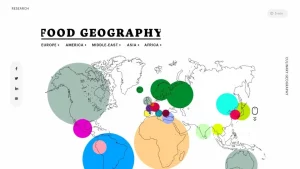Introduction
In our globalized world, where food knows no boundaries, the influence of regional trade agreements and alliances on food safety standards is a significant and complex reality. While international organizations like the World Health Organization (WHO) and the Codex Alimentarius Commission provide overarching guidance, regional trade blocs and alliances often create their own set of standards. These regional standards can have far-reaching implications, impacting international trade, consumer health, and global food safety harmony. In this article, we will explore the intricate relationship between trade blocs, alliances, and food safety standards and analyze their effects on the global food safety landscape.
The Global Culinary Landscape
As we embark on a culinary journey that transcends borders, we encounter diverse flavors, ingredients, and culinary traditions from every corner of the world. This rich tapestry of global cuisine enriches our lives and palates.

The Imperative of Food Safety
Despite the delightful diversity of our culinary adventures, food safety is paramount. It ensures that the food we consume, whether at home or abroad, is safe and wholesome.
The Complex Challenge
Harmonizing food safety standards on an international scale is a complex task. It necessitates the reconciliation of different regulatory systems, inspection protocols, and cultural practices while safeguarding global food safety.
The Role of International Organizations
International organizations like the WHO and the Codex Alimentarius Commission play vital roles in setting global food safety standards. Their contributions serve as a foundation for harmonization.
Regional Trade Blocs and Alliances
Regional trade blocs and alliances, such as the European Union (EU), the Association of Southeast Asian Nations (ASEAN), and Mercosur, create their own food safety standards within their respective regions. These standards often go beyond international guidelines and are influenced by economic, political, and cultural factors.
The Impact on International Trade
The standards set by regional trade blocs can impact international trade significantly. Products that do not meet the regional standards may face barriers to entry, making it challenging for exporters to access these markets.
Consumer Health and Confidence
Regional standards influence consumer health and confidence. Consumers in regions with stringent standards may have greater trust in the safety of their food, while those in regions with less stringent standards may be more cautious.
Challenges to Global Food Safety Harmony
The existence of regional standards can create challenges in achieving global food safety harmony. These challenges include the potential for trade disputes, the burden on small-scale producers to comply with multiple standards, and the difficulty of coordinating and harmonizing standards on a global scale.
Seeking Global Harmonization
Efforts to achieve global harmonization amidst the influence of regional trade standards require cooperation, negotiation, and innovation.
Transparency and Technology
Transparency in the food supply chain is critical. Technology, such as blockchain and DNA barcoding, can provide visibility and traceability, fostering greater consumer trust.
International Cooperation and Diplomacy
International cooperation and diplomacy are crucial. Diplomatic efforts and dialogues can help bridge the gaps and promote a unified approach to food safety.

Conclusion
The influence of regional trade blocs and alliances on food safety standards is a complex reality in our interconnected world. While these regional standards serve important economic and political functions, they can pose challenges to global food safety harmony. By fostering transparency, technological innovations, international cooperation, and diplomatic dialogues, we can navigate the complexities of regional influences and strive for a harmonized global approach to food safety. In doing so, we can ensure that every bite we take, regardless of its origin, is both delicious and safe, achieving the perfect balance between regional realities and global harmony.




